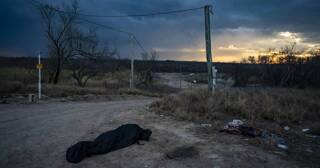Meteor Explodes Over Russia With Force Rivaling Nuclear Bomb

After cruising through space for who knows how many millennia, a chunk of rock about 15 meters across plunged into Earth’s atmosphere above the Russian region of Chelyabinsk today and exploded with a force rivaling a nuclear blast, injuring at least 700 people with its shockwave: Russian Meteor Largest in a Century.
A meteor that exploded over Russia this morning was the largest recorded object to strike the Earth in more than a century, scientists say. Infrasound data collected by a network designed to watch for nuclear weapons testing suggests that today’s blast released hundreds of kilotonnes of energy. That would make it far more powerful than the nuclear weapon tested by North Korea just days ago and the largest rock crashing on the planet since a meteor broke up over Siberia’s Tunguska river in 1908.
“It was a very, very powerful event,” says Margaret Campbell-Brown, an astronomer at the University of Western Ontario in London, Canada, who has studied data from two infrasound stations near the impact site. Her calculations show that the meteoroid was approximately 15 metres across when it entered the atmosphere, and put its mass at around 40 tonnes. “That would make it the biggest object recorded to hit the Earth since Tunguska,” she says.
The meteor appeared at around 09:25 a.m. local time over the region of Chelyabinsk, near the southern Ural Mountains. The fireball blinded drivers and a subsequent explosion blew out windows and damaged hundreds of buildings. So far, more than 700 people are reported to have been injured, mainly from broken glass, according to a statement from the Russian Emergency Ministry.
The unsettling part of the story is that nobody saw it coming — and we probably won’t see the next one either.
Despite its massive size, the object went undetected until it hit the atmosphere. “I’m not aware of anyone who saw this coming,” says Heiner Klinkrad, head of the European Space Agency’s space debris office at the European Space Operations Centre in Darmstadt, Germany. Although a network of telescopes watches for asteroids that might strike Earth, it is geared towards spotting larger objects — between 100 metres and a kilometre in size.
“Objects like that are nearly impossible to see until a day or two before impact,” says Timothy Spahr, Director of the Minor Planet Center in Cambridge, Massachusetts, which tracks asteroids and small bodies. So far as he knows, he says, his centre also failed to spot the approaching rock.












